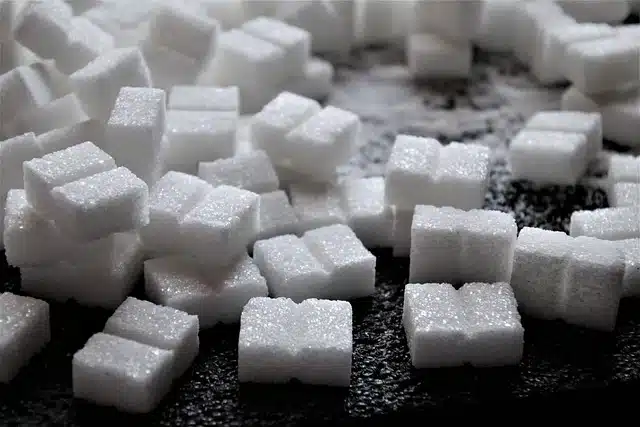
Sucrose is the common sugar.
Sugar is a body with solid characteristics that is white and crystallized . This type of substance is part of carbohydrates , is soluble in H2O and is characterized by its sweet flavor .
Beet , cane and other types of vegetables are sources that allow us to obtain sugar. The term is usually used to name sucrose , which is the common sugar used in food preparation. This sucrose is a type of carbohydrate composed of a fructose molecule and another glucose molecule.
The notion of sugars is also used to name disaccharides, monosaccharides and carbohydrates in general, especially in the industrial field.
Sugar characteristics
Sugar provides calories that are classified as empty, since they do not have minerals or vitamins. However, it is an ingredient widely used as a sweetener to enhance the flavor of preparations.
When sugar is heated beyond its decomposition point, caramel is formed (which can be poured over flan, for example).
Among the different types of sugar, white sugar can be mentioned (which contains 99.5% sucrose), refined sugar (between 99.8% and 99.9% sucrose), brown or black sugar (which It is crystallized and centrifuged but not refined, which gives it a dark color ) and blonde sugar (lighter than brown sugar and with a higher level of sucrose).
Brazil is the world's leading sugar producer, followed by nations such as Argentina , China and the United States .

Sweets or treats usually include a large amount of sugar.
The myths
It is difficult to find another food product surrounded by as many myths as sugar. Four of the most common are described below, trying to find how much reality there is in them :
* causes overweight : the truth is that weight gain occurs if excess calories are ingested, but these are obtained from sugar, proteins and fats. In other words, it is not so much due to the product but to the proportions in which it is consumed;
* produces cavities : it does, but just as much as bread and other seemingly harmless foods, since the reason cavities appear is that the bacteria that live in the mouth generate acids every time we eat carbohydrates, no matter what guy. This takes place within half an hour after ingestion, which is why it is highly advisable to brush your teeth before this process can begin.
* causes diabetes : in reality, it does not. Those who suffer from diabetes cannot assimilate sugar normally, which is why they are advised to consume it in moderate quantities. Among the sources of the disease, sugar intake is not included, but rather issues such as genetics, overweight and age.
* superiority of brown sugar over white : both varieties present, for example, the same proportion of calories per gram of carbohydrates and in neither case are minerals, fiber or vitamins found. The only difference is that brown sugar is partially refined with a certain percentage of molase.
Sugar, present in different foods
Despite being able to prove that such accusations are not based on reality, this does not mean that eating sugar without any type of moderation will bring good results. The sweet flavor, so attractive to most people, can be enjoyed not only in chocolate bars and candy, but also in fruits, which also provide nutrients such as vitamins and antioxidants.
The combination is always the best way, since it allows you to obtain the benefits of a healthy diet while enjoying those ingredients that are not so complete but with irresistible tastes.
